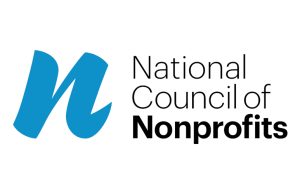Donors who send in a check after receiving a direct mail appeal are less likely to go online to check out the charity than they were four years ago. That’s a reversal of three years earlier when a spike upward was experienced between 2005 and 2008.
The national survey of adults showed that half of donors who make a gift as a result of a direct mail appeal do not do any Internet research about the organization before writing the check. That’s an increase from 47 percent during 2008. The 2008 number was a large upswing from 2005 when 61 percent said they didn’t do Internet research.
The NonProfit Times contracted with Opinion Research Corporation (ORC) to conduct a national survey this past August to find donors’ reactions to charity appeals. The results are the findings of a telephone survey conducted among a national probability sample of 1,015 adults comprising 503 men and 512 women 18 years of age and older, living in private households in the continental United States. Interviewing for this survey was completed during the period Aug. 9-12, 2012.
The polling shows how the Internet became more prevalent between 2005 and 2008 while the new numbers are more potentially telling about the mindset of the consumer. Various studies have shown a decline in new donors for the past several years and brand loyalty to an organization appears to keep many donors from needing more information.
Respondents to The NPT polling had several choices, first if they looked to the Internet for information and where they went if they did want more information. In the latest polling, 35 percent went to an organization’s website, down two points from 2008 but up from 19 percent in 2005.
Online discussion groups were the source for 14 percent of donors during 2012, up four points from 2008 and 11 points from 2005. Blogs came in at 9 percent in the most recent polling, up one point from 2008 and up seven points from 2005.
It’s quite a different story with the independent ratings agencies. Less than one-quarter (22 percent) of donors who go online check in with a ratings agency, down two points from 2008 but up from 11 percent in 2005.
The polling data comes at a time when two of three watchdog organizations are reporting greater usage of their sites since. GuideStar showed a decline for 2011. Thus, donors who avail themselves of the BBB Wise Giving Alliance and Charity Navigator might be making numerous visits.
Rick Christ, a vice president and online fundraising specialist with the agency Amergent in Peabody, Mass., doesn’t believe the percentage of donors who say they go to ratings agency websites. “I believe that fewer people use ratings agencies than even indicate on this survey. It’s the sort of thing a person thinks they should answer ‘yes’ to,” he said.
The more educated the donor, the more likely they were to use the Internet to locate information from third parties. Independent ratings groups were visited by 33 percent of donors who had a college degree. And, 48 percent of those college-educated donors went to an organization’s website.
Since one-third of donors with the deepest pockets go to an organization’s website, the question is why organizations don’t do more with their sites. “Here’s a take-away from the numbers,” said Christ. “Why don’t more nonprofits create a page titled ‘(Org name) Direct Mail Appeal’ so it shows up high on Google? They could post a photo of the outer envelope with links to their Form 990, pie charts from the annual report, a video showing the good work they do, and a donation form. The website home page should have a graphic of the outer as well, linking to the Direct Mail Appeal page.”











